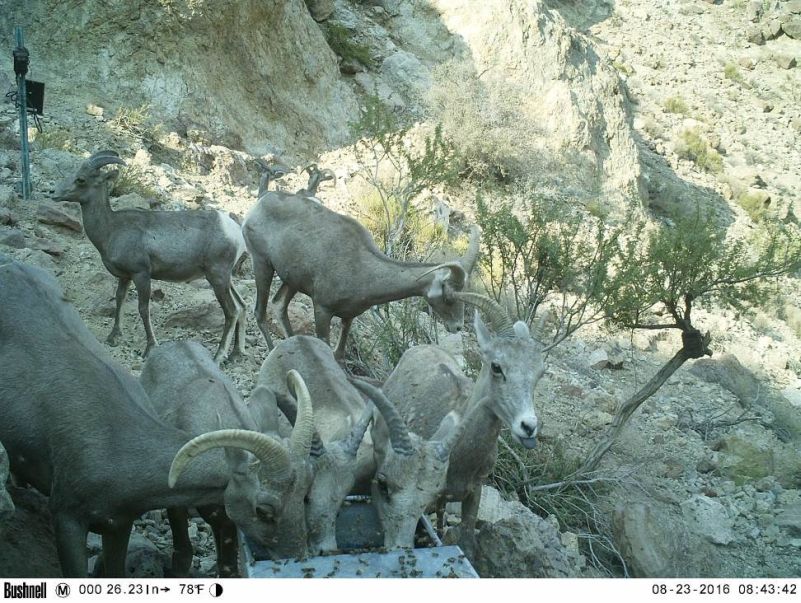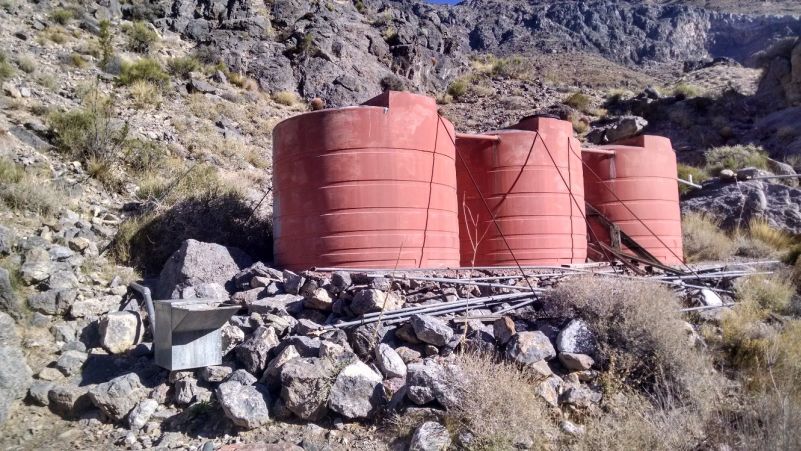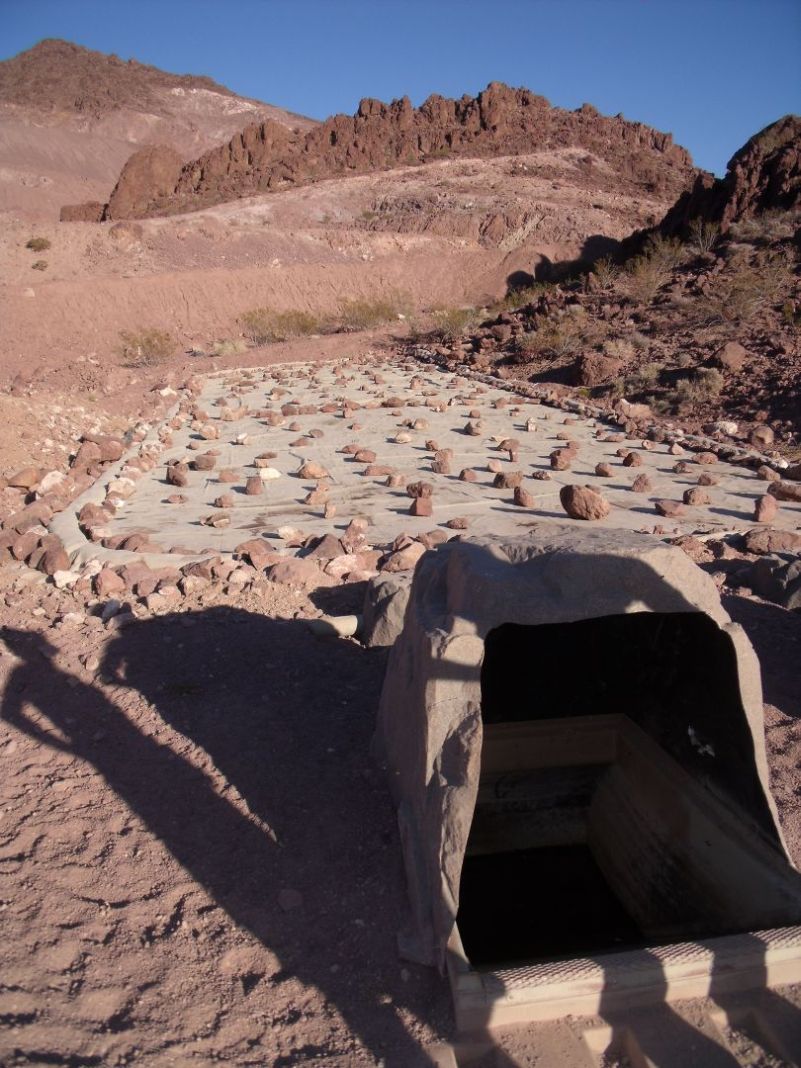During the cooler months of the year, desert bighorn sheep meet most of their water needs from forage and drink water only when new growth is lacking. In contrast, during the hot season they regularly visit surface water to drink. One result is that summer home ranges tend to be a relatively short distance from water, and habitat selection is strongly influenced by availability of surface water. When the extreme hot and dry conditions of summer abate, desert bighorn sheep quickly expand their home ranges to utilize habitat farther from core water sources.
In the 1940s, wildlife biologists initiated programs to expand the availability of surface water in desert ecosystems. Those programs were based on the hypothesis that surface water was a key factor limiting some wildlife populations. Quail were the first focal species, but other species, including bighorn sheep, soon followed. Various types of water systems have been built that provide bighorn sheep drinking water in the hot season from impounded rain water or water tapped from high water tables.
 Ewes using a wildlife water development in the hot summer months in the Mojave Desert. CDFW Photo.
Ewes using a wildlife water development in the hot summer months in the Mojave Desert. CDFW Photo.
 This is an example of the older wildlife water development (WWD) systems. This type of WWD collects water from a catchment dam during large rain events. Wildlife access the water from a "New Mexico" style above drinker box. CDFW photo by Danielle Glass.
This is an example of the older wildlife water development (WWD) systems. This type of WWD collects water from a catchment dam during large rain events. Wildlife access the water from a "New Mexico" style above drinker box. CDFW photo by Danielle Glass.
 This new Raincatcher style system was designed by the Society for the Conservation of Bighorn Sheep (SCBS) and is a more efficient and lower profile system than the older catchment dams. The storage tanks are buried underground. CDFW photo by Danielle Glass.
This new Raincatcher style system was designed by the Society for the Conservation of Bighorn Sheep (SCBS) and is a more efficient and lower profile system than the older catchment dams. The storage tanks are buried underground. CDFW photo by Danielle Glass.